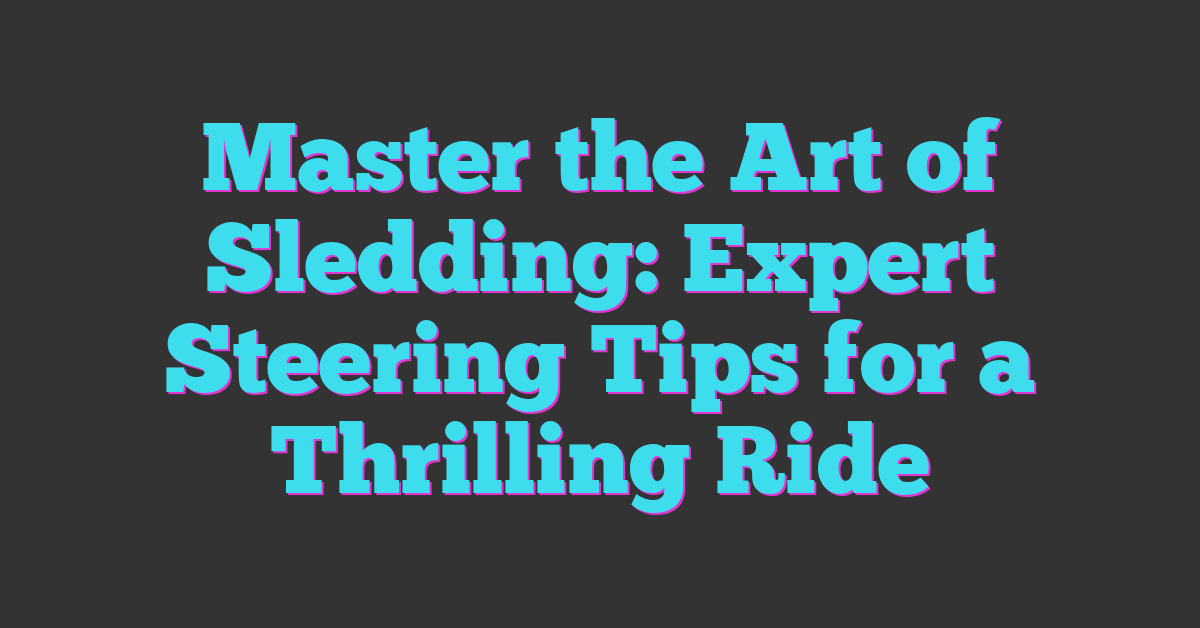Ready to take your halfpipe skills to the next level? Mastering advanced pipe tricks can transform your riding experience and boost your confidence on the slopes. Whether you’re looking to impress your friends or compete at a higher level, this guide will help you navigate the world of halfpipe riding with ease.

Overview of Halfpipe Riding
Halfpipe riding combines finesse, rhythm, and creativity. You’ll find the halfpipe a thrilling playground, offering endless opportunities to express your style. Mastering it enhances your overall snowboarding or skiing experience, allowing you to explore various tricks while showcasing your skill.
The structure of a halfpipe consists of two parallel walls with a U-shape, designed for carving transitions and generating speed. You’ll ride from one wall to the other, gaining height as you launch off the edge. The key is to maintain momentum and find the right line for each trick.
Halfpipe riding’s core techniques revolve around edge control, body position, and timing. Edge control ensures smooth transitions between walls. Correct body positioning aids in balance and landing tricks properly. Timing plays a crucial role in executing jumps and landings; you’ll gain confidence as you refine your rhythm.
Engaging in halfpipe riding also promotes improvement in several areas:
- Balance: Strengthens your ability to ride fluidly in varying conditions.
- Strength: Builds core and leg power, essential for landing tricks.
- Confidence: Boosts your self-assurance in your overall riding skills.
Whether you’re cruising for fun or pushing limits for competition, halfpipe riding offers a dynamic challenge. Embrace the excitement, and watch your skills evolve as you navigate the halfpipe.
Essential Gear for Halfpipe Tricks
To conquer the halfpipe, having the right gear enhances your performance and keeps you safe. Invest in quality equipment that improves your ability to execute advanced tricks effectively.
Skateboards and Accessories
- Snowboard: Choose a snowboard that suits your skill level and riding style. A stiffer board offers stability for high-speed tricks, while a more flexible board enhances maneuverability for technical moves.
- Bindings: Opt for high-quality bindings that provide comfort and responsiveness. Look for ones that offer a secure fit and allow for quick adjustments.
- Boots: Select boots that fit snugly and provide the right flex for your riding style. Ensure that they offer good ankle support and keep your feet warm.
- Goggles: Invest in goggles with anti-fog features and UV protection. Choose lenses suitable for varying light conditions to improve visibility while riding.
- Helmet: Always wear a helmet designed for snow sports. A well-fitted helmet protects your head while allowing you to focus on executing tricks.
Safety Equipment
- Wrist Guards: Protect your wrists from injuries during falls or when landing hard. Look for guards that fit comfortably under your gloves.
- Knee Pads: Wearing knee pads can prevent hurts when you wipe out on tricky maneuvers. Choose lightweight pads that stay in place without restricting movement.
- Impact Shorts: Don impact shorts for added cushion on your hips and tailbone. These can minimize pain from falls while allowing you to push your limits.
- Elbow Pads: Equip yourself with elbow pads to protect against impacts. A snug fit will help you avoid distractions while focusing on your halfpipe performance.
- Back Protector: Consider a back protector for added safety. This piece of gear is particularly valuable for those working on more complex tricks.
Techniques for Mastering Advanced Pipe Tricks
Mastering advanced pipe tricks requires a keen understanding of body positioning, balance, and controlling speed and momentum. These techniques play a vital role in executing impressive maneuvers and maintaining smooth transitions.
Body Positioning and Balance
Body positioning is everything when you’re riding the halfpipe. Keep your knees slightly bent and your weight centered over your board. This stance promotes stability and allows for quick adjustments mid-trick.
Position your shoulders parallel to the board, and keep your arms relaxed at your sides to enhance balance. As you enter the pipe, lean slightly forward, applying pressure to the front foot. This technique helps drive into the transitions effectively.
Practice shifting your weight between your toes and heels to enhance edge control. Roll your ankles while turning to maintain a fluid motion throughout your runs. Engaging your core provides additional stability, especially when landing trickier moves.
Speed and Momentum Control
Speed and momentum control are key to successfully mastering pipe tricks. Start by generating speed on the straightaway before entering the halfpipe. A strong approach allows you to utilize gravity to your advantage.
As you carve into the transitions, lean into your turns to maintain speed and control. Avoid using excessive force, as this can lead to loss of balance. Instead, maintain a consistent, controlled pace.
Consider your trajectory when executing tricks. Launch off the coping with enough speed to complete your maneuver but not so much that you become airborne beyond control. Focus on landing with your knees bent to absorb shocks, which promotes a smoother ride.
Experiment with trick variations while maintaining speed. Learning to manage your momentum enables you to combine multiple tricks seamlessly, elevating your performance in the pipe.
Popular Advanced Tricks in the Halfpipe
Halfpipe riding offers a thrilling arena for showcasing advanced tricks that elevate your game to new heights. Mastering these tricks not only adds style but also enhances your overall control and confidence on the slopes.
The McTwist
The McTwist is a signature trick that combines a 540-degree spin with an inverted flip. To execute this move, approach the lip of the halfpipe at a solid speed. As you reach the edge, initiate the spin by winding up your shoulders and using your hips to generate momentum. Tuck your knees into your chest while flipping, ensuring your body rotates smoothly. Spot your landing as you complete the spin and prepare to absorb the impact with your knees bent. Successful execution adds a unique flair to your run and leaves a lasting impression.
The 900
The 900 is a classic trick that requires precise timing and a strong commitment. It involves two and a half rotations in the air. Start with a balanced approach, carving hard into the lip of the halfpipe. As you leave the edge, pop off the transition and immediately begin your rotation. Keep your head turned toward your landing to maintain orientation. Focus on extending your arms and maintaining a stable body position throughout the spin. Spot your landing and prepare to land with knees flexed for maximum absorption. Completing a clean 900 showcases not only your technical ability but also boosts your confidence in tackling higher-level tricks.
Tips for Progressing Your Skills
Improving your halfpipe skills involves a mix of dedicated practice and thoughtful analysis of your performance. You’ll find success by establishing effective practice routines and critically reviewing your efforts.
Practice Regimens
Prioritize consistent practice to sharpen your halfpipe skills. Follow these structured regimens:
- Warm-Up Sessions: Start with gentle runs on the slope to prepare your body.
- Repetition of Techniques: Focus on specific tricks like grabs or spins. Break down each trick into manageable components.
- Session Goals: Set clear objectives for each day, such as nailing a new trick or improving your approach speed.
- Video Analysis: Record your runs. Reviewing footage helps identify areas needing improvement.
- Progress Tracking: Maintain a journal, noting achievements and areas for further work.
Allocate time each week for these focused practice sessions, ensuring you build muscle memory and confidence gradually.
Analyzing Your Performance
Conducting a post-session analysis can significantly enhance your skills. Try these strategies:
- Review Videos: Watch your recorded runs. Focus on body positioning and transitions.
- Feedback from Peers: Invite friends or coaches to give constructive feedback. They can spot what you might not notice, like balance issues or timing errors.
- Set Measurement Criteria: Use specific metrics like air time or completion of a trick to measure improvement.
- Reflect on Feelings: Take mental notes about how specific tricks and transitions felt during execution. Identifying moments of discomfort can guide future focus areas.
- Adaptive Learning: Be willing to adjust your techniques based on your analysis. Embrace changes as part of the improvement process.
Engaging in regular practice and thorough performance analysis brings clarity to your progress and assures a steady elevation of your halfpipe skills.
Conclusion
Mastering advanced pipe tricks is all about embracing the journey and enjoying every ride. As you refine your skills in the halfpipe you’ll not only elevate your performance but also boost your confidence on the slopes. Remember to focus on your body positioning and control your speed while experimenting with new tricks.
With the right gear and dedicated practice you can take your halfpipe skills to new heights. Keep pushing your limits and don’t forget to have fun along the way. Each session is an opportunity to grow and discover your unique style in the halfpipe. So gear up and get ready to ride like never before!
















